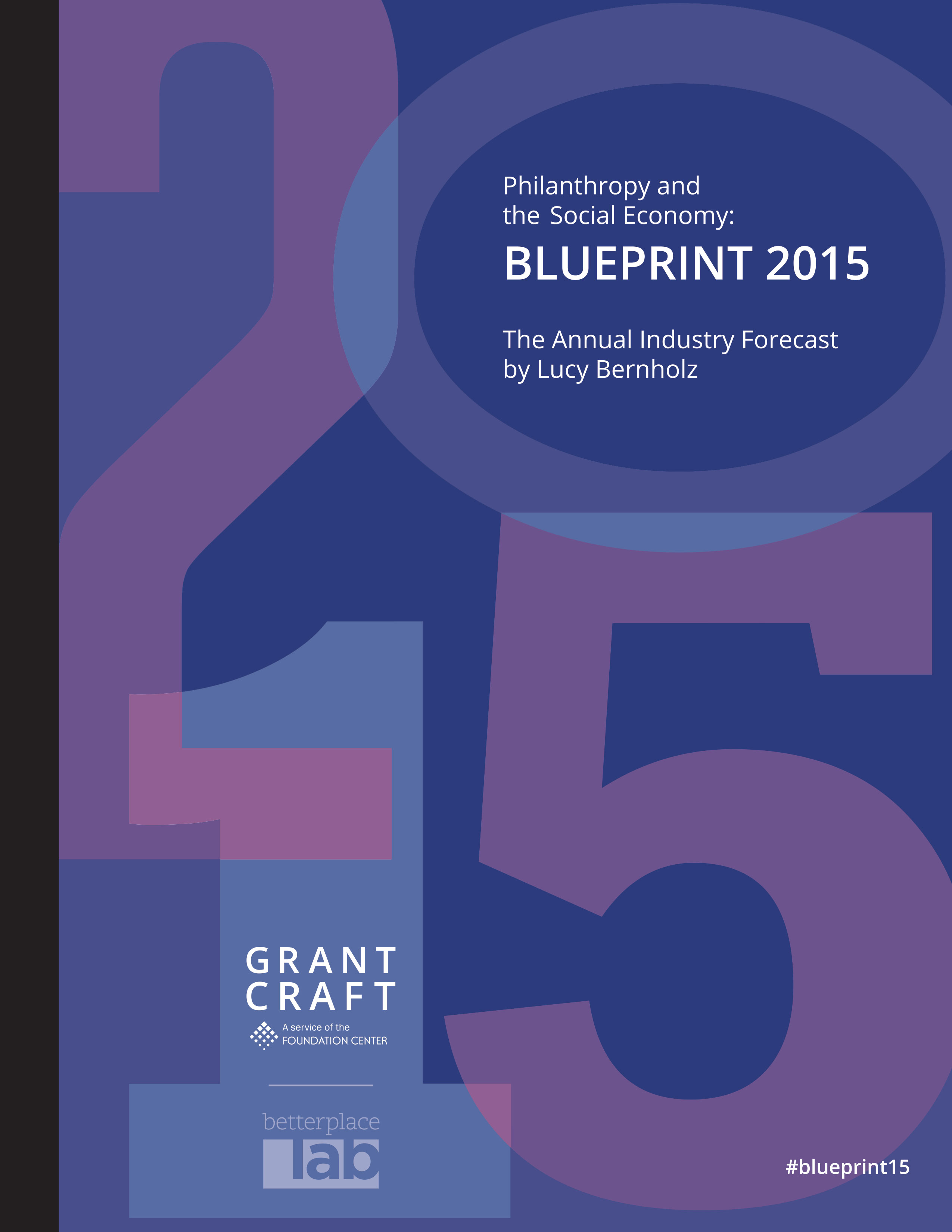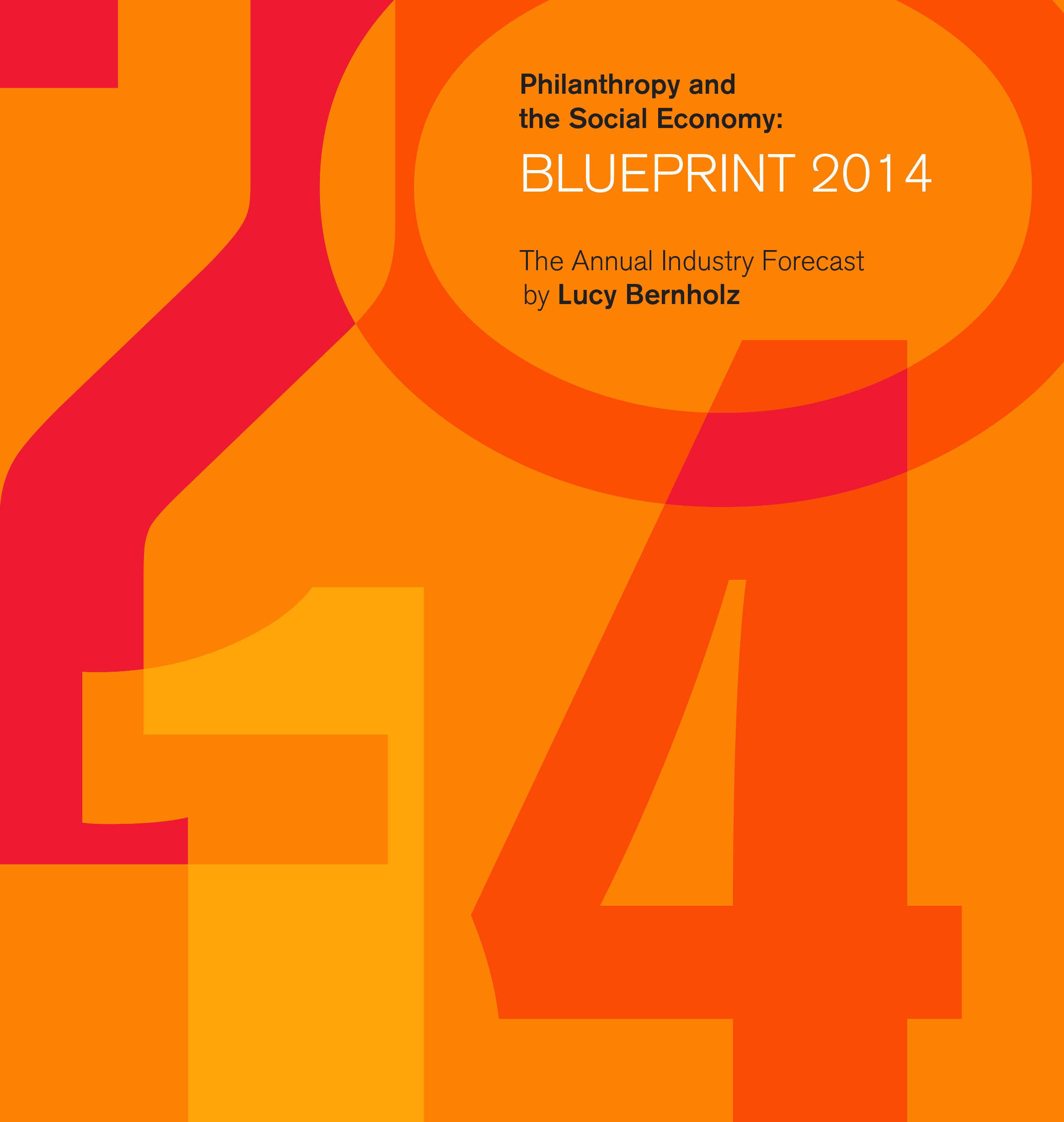Social Sector Still Lags Far Behind the Future of Big Data
Blueprint 2015, Lucy Bernholz’s sixth annual publication predicting future trends in philanthropy, announces a new focus:
From now on, we’ll be looking at the structures of the social economy in the context of pervasive digitization. This is not about gadgets; it’s about complicated (and fundamental) ideas like free association, expression, and privacy in the world of digital data and infrastructure. (p. 5)
Lucy goes on to pose some thought-provoking conceptions of civil society (“the place where we use private resources for public benefit”), digital civil society, and what she sees as three core purposes of civil society: expression, protest, and distribution.
That is, we organize to express ourselves artistically, culturally or as members of a particular group; to protest or advocate on behalf of issues or populations; and to provide and distribute services or products that the market or state are not providing. (p. 6)
In essence, civil society, and in many cases nonprofits, are where people come to put their values into action.
Lucy highlights the promise and peril of digital civil society. Digital tools offer more power to civil society movements and organizations, and with new tools come new expectations. Lucy foresees some danger for philanthropy and nonprofits in the use of digital tools for social good — for example, she predicts a major data privacy scandal involving a nonprofit and several instances of nonprofit apps needing to be pulled because of public backlash regarding user privacy concerns — and some new kinds of benefits, such as donations of corporate data (“data philanthropy”) for use in partnership with nonprofits. She frames some key questions for the future:
expectations. Lucy foresees some danger for philanthropy and nonprofits in the use of digital tools for social good — for example, she predicts a major data privacy scandal involving a nonprofit and several instances of nonprofit apps needing to be pulled because of public backlash regarding user privacy concerns — and some new kinds of benefits, such as donations of corporate data (“data philanthropy”) for use in partnership with nonprofits. She frames some key questions for the future:
The immediate future will bring questions of data ownership and management to the attention of nonprofits, foundations, and others in the social economy…. How to use digital data safely, securely, and in line with your organization’s mission will be questions involving board members, executives, technology advisors, program providers, and legal experts. More organizations will realize that, whatever their social purpose, they need to manage their digital assets with the same care they manage their financial assets. (p. 27)
This will certainly bear out over the longer run, but unfortunately, for most foundations and nonprofits, this challenge is still too far off. The “big data” that would be most useful, and most in need of protection, is in front-line service organizations, not in foundations. These enterprises — health clinics, schools, social service organizations providing case management, schools, and more — have not built the systems they’d need to use big data well. In the for-profit world, tech enterprises like Amazon and Facebook are built on a foundation of knowing and analyzing what their customers want and need. For non-tech companies working hard to gain and use the advantages big data can enable, their progress has moved in at least four phases, from first setting a foundation for capturing and handling all of their own data, then using it to assess their own performance, then beginning to respond to customer preferences, and then beginning to use big data for predictive analytics, to begin to anticipate client needs. Most large-scale social purposes enterprises haven’t yet mastered that first, foundational phase. This is partly due to scarcity of resources, but it’s also partly because of discomfort about the ethics of gathering and using client data this way. Bernholz cites legislation in 20 states to protect data collected on students as one example of growing concerns about discriminatory or improper use of data. But those of us who use Facebook, or a Fitbit, must face the fact that we are the product. These companies capture, analyze, and transfer (or share) our data because it provides tremendous value to them.
I think the nonprofit sector needs to be more aggressive about capturing similar data and using it to push helpful information and services to vulnerable people who need it, as I’ve written here and here. I think the solution to the challenges of informed consent, transparency about methods, and protecting client confidentiality will be found in giving users the ability to know their data is being used, how and by whom, and giving them the ability to withdraw their data from the big data set whenever they like. But we need to work to give them that ability, not foreclose it for them because we fear we can’t be trusted with it.
St. Augustine observed that the innocence of children consists mainly in the frailty of their limbs. Lucy is correct to point out we shouldn’t assume foundations and nonprofits will be immune to temptation to take shortcuts with sensitive data, but in the near term, their most important challenge is strengthening their limbs, building the muscles they need to use big data well and pursue the maximum public good within ethical limits. And when they get there, the groundbreaking work Lucy, Rob Reich, and their other colleagues at the Digital Civil Society Lab at Stanford’s Center on Philanthropy and Civil Society will prove invaluable in guiding them through this thicket.
Lucy is right to turn our focus to digital tech for social good and the governance, management, and ethical challenges philanthropy will confront. She may be too early (as she has been for five years on the coming prevalence of payments via mobile tech), but the future challenges she foresees for philanthropic use of big data can’t come soon enough.



